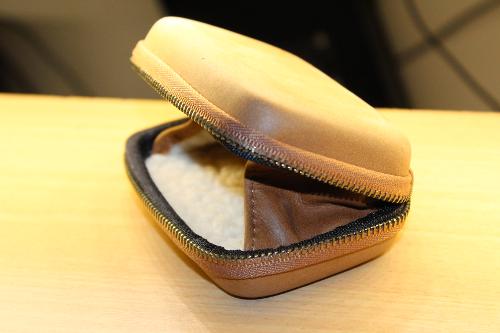Many thanks to d marc0 and Campfire for arranging this tour unit.
So it looks like the Lyra is no longer available in its current guise and is due for a reboot at some stage, let's hope CA can maintain the exceptional build quality and improve on the already good sound, here's my brief thoughts...
The Lyra is physically smaller then the Orion and is a much better fit for anyone with less than average size ears like me, I still had problems due to the wide bore and shallow fit and could only really use the included small silicon tips, which was a shame as the foams seem to sound slightly better to me. I also had an annoying fit issue with the left, where I had to get it just right for a decent sound. I do hope Campfire will consider those with smaller than regular lugs in the future!
The build quality is outstanding and the high gloss ceramic looks even better in real life. I really like the modern angular design of the rest of Campfire's lineup but if I had to make a choice it would probably be the understated classy elegance of the Lyra.
Overall, the Lyra has a relaxing, warm smooth sound that is not overly bassy but has a bass sheen that is ever present. Technically, it might not have the speed, separation or clarity as some but this is an iem where the whole is greater than the sum of its parts and if you can submit to its charms will reward you with an engaging enjoyable 'musical' listen.
I tried it with a few sources including iPhone, Ipods, HM801 and Mojo, all were decent but surprisingly (for me) I found the synergy with the Mojo to be really good, I would have expected the smooth nature of both to be too much but this was not the case, maybe the Lyra likes power or the Mojo’s forward and Lyra’s slightly restrained mids make a good match.
It’s not all roses for me though, as well as the fiddly fit, after a few days of listening each time, I did find myself wanting a bit more bite, clarity and bass speed/texture, these will suit some people more than others, personally I prefer to listen to something that suits my general tastes over a longer period rather than changing all the time.
This is a high quality premium package and is recommended if the signature suits or if you just fancy a change of pace every now and again.
So it looks like the Lyra is no longer available in its current guise and is due for a reboot at some stage, let's hope CA can maintain the exceptional build quality and improve on the already good sound, here's my brief thoughts...
The Lyra is physically smaller then the Orion and is a much better fit for anyone with less than average size ears like me, I still had problems due to the wide bore and shallow fit and could only really use the included small silicon tips, which was a shame as the foams seem to sound slightly better to me. I also had an annoying fit issue with the left, where I had to get it just right for a decent sound. I do hope Campfire will consider those with smaller than regular lugs in the future!
The build quality is outstanding and the high gloss ceramic looks even better in real life. I really like the modern angular design of the rest of Campfire's lineup but if I had to make a choice it would probably be the understated classy elegance of the Lyra.
Overall, the Lyra has a relaxing, warm smooth sound that is not overly bassy but has a bass sheen that is ever present. Technically, it might not have the speed, separation or clarity as some but this is an iem where the whole is greater than the sum of its parts and if you can submit to its charms will reward you with an engaging enjoyable 'musical' listen.
I tried it with a few sources including iPhone, Ipods, HM801 and Mojo, all were decent but surprisingly (for me) I found the synergy with the Mojo to be really good, I would have expected the smooth nature of both to be too much but this was not the case, maybe the Lyra likes power or the Mojo’s forward and Lyra’s slightly restrained mids make a good match.
It’s not all roses for me though, as well as the fiddly fit, after a few days of listening each time, I did find myself wanting a bit more bite, clarity and bass speed/texture, these will suit some people more than others, personally I prefer to listen to something that suits my general tastes over a longer period rather than changing all the time.
This is a high quality premium package and is recommended if the signature suits or if you just fancy a change of pace every now and again.




























































